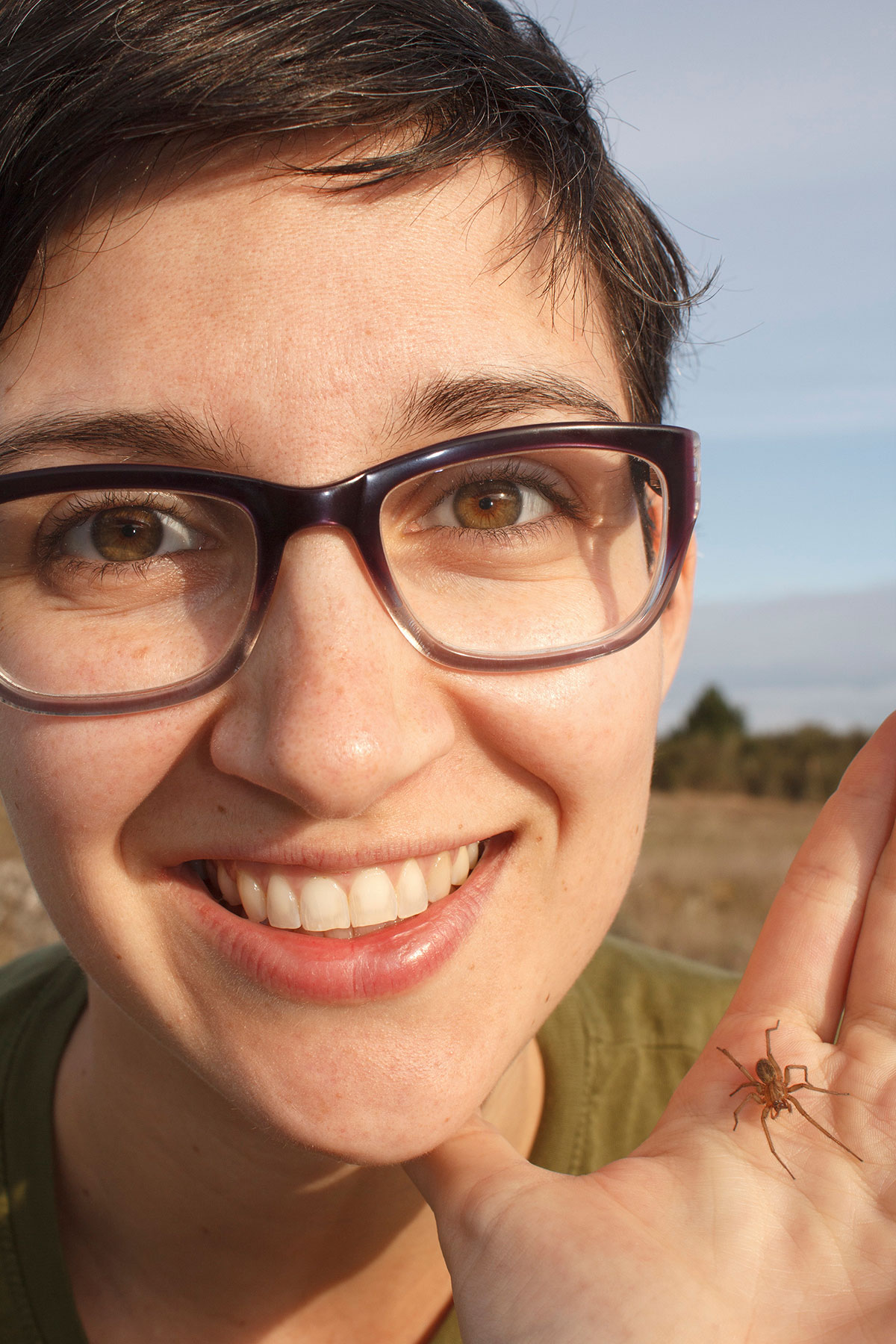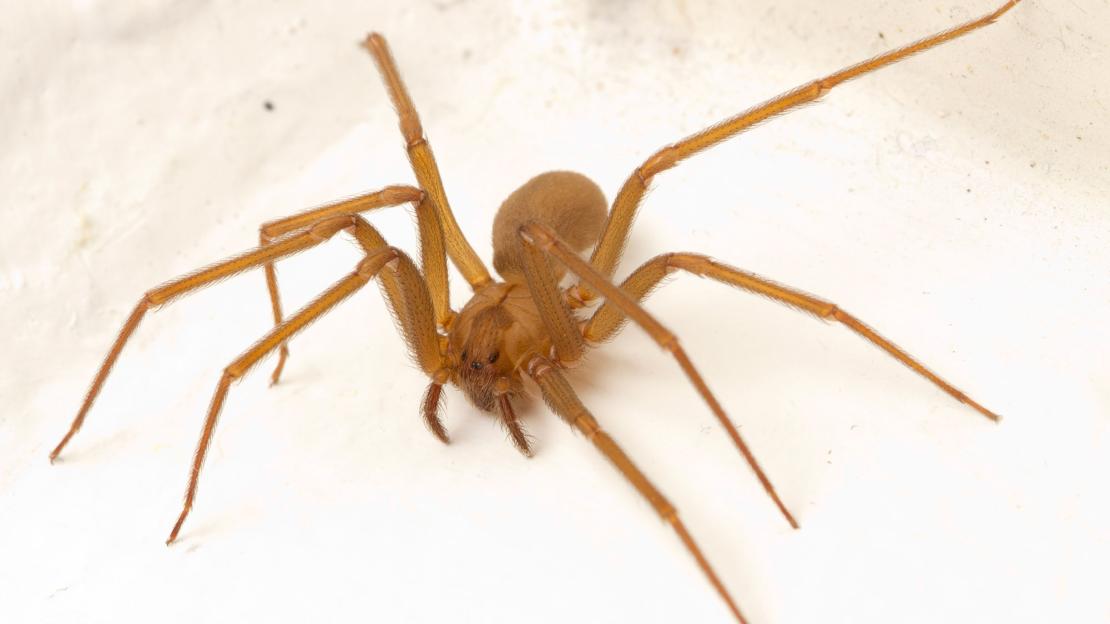A new citizen science project co-founded by a U of T Scarborough researcher is harnessing the power of social media to dispel some common myths about a much-maligned spider.
“We’re looking for people to post photos of any spider that they think is a brown recluse,” says Catherine Scott, a PhD student in Professor Maydianne Andrade’s lab at U of T Scarborough.
Started by three entomologists including Scott, Recluse or Not? aims to educate the public about the recluse spider while also gathering more information about its distribution and to identify those spiders often mistaken for a brown recluse.
“It’s important to know if populations are popping up outside of their native range, but also offer reliable information to help people identify the often-harmless spiders they may come across and end up killing,” she says.
Scott was motivated to start the project more than a year ago as a way to provide reliable knowledge to the public. She says there’s an abundance of poor information online, particularly about brown recluse bites, but also the myth that the spider is common in Canada.
Inspired by a social media project started by ecology professor David Steen for copperhead and cottonmouth snakes, Scott borrowed the idea with Steen’s permission. She began searching twitter for photos that people were posting of what they thought were brown recluse spiders, using the hashtags #NotARecluse or #ReallyRecluse.
Then last month entomologists Dr. Matt Bertone and Dr. Eleanor Spicer Rice approached Scott about expanding her effort into a citizen science project where people could provide data on where they are finding brown recluse spiders across North America. Together they recently started the @RecluseOrNot twitter account, inspired by ecologist Dr. Michelle LaRue’s #CougarOrNot hashtag.
One goal of the project is to also collect data on genetic differences between indoor and outdoor brown recluse spiders. Sample specimens will be sent to Bertone, who is part of a team doing DNA analysis to understand the differences between the two and the movement of these spiders.

The brown recluse has a bad reputation because their bites can occasionally be dangerous. But bites are rare, even in areas where the spider is common, and more than 90 per cent are not serious and don’t require medical intervention. Only a handful of people have ever died from a recluse bite, notes Scott.
“People like to blame spiders for mystery bites even though the more likely culprits are ticks, mites, mosquitos, bed bugs and fleas, which are all arthropods that feed on human blood. Spiders on the other hand do not feed on blood , have no reason to bite humans, so bites are very rare,” she says.
In fact, the brown recluse is not aggressive and will only bite if it’s being defensive, like if one gets stuck in your clothing or if you reach into a dark corner. Scott says it’s important the public understand this because a misdiagnosed brown recluse bite could be hiding a more serious health concern. She adds many conditions can be mistaken for recluse bites including MRSA, Lyme disease, and even some cancers.
There are 11 species of recluse spiders in North America, but only brown recluses are found in homes. In fact, the brown recluse is particularly adept at living with humans and can be found living mostly in homes throughout the much of the central United States.
There have only been four recorded specimens of recluse spiders ever recovered in Canada – none of them a brown recluse and all hitchhikers from far away – with the most recent being found in 2007. Yet there’s a persistent myth that the spiders are in Canada and that people are being bitten, including recent media coverage.
“One of my main motivations in doing this as a Canadian is that pretty much everyone I have talked to knows someone who claims to have been bitten by a brown recluse,” she says. “I highly doubt it’s true, since there’s no evidence of brown recluse spiders being in Canada, and even where they are common, bites are very rare.”
HOW MALE BLACK WIDOW USE CHEMICALS TO GAIN A COMPETITIVE ADVANTAGE
One spider that commonly gets mistaken for a brown recluse in Canada is the hobo spider, which is found in areas of B.C. But as Scott notes, pretty much any spider that’s brown is often mistaken for a brown recluse.
“I’m looking forward to people posting their photos of what they think are brown recluses, and as a scientist I’m happy to be proven wrong with evidence that they occur in Canada,” she says. “I just strongly doubt that will happen.”
